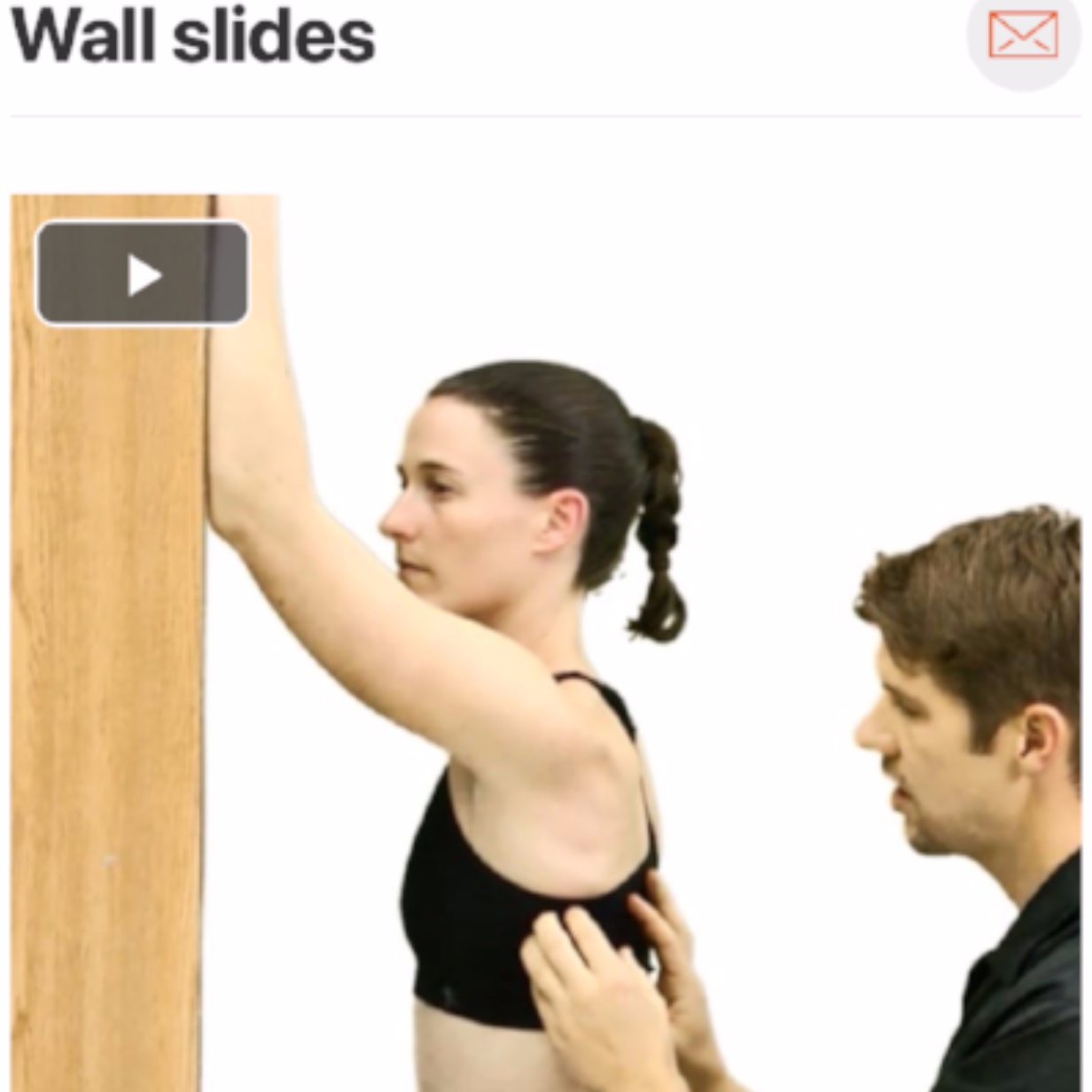Postural and movement faults tend to be common in individuals with sub-acromial pain syndrome with downward rotation, depression, abduction, anterior tilt, and winging being common scapular faults, and internal rotation along with anterior glide being common humeral faults. Excessive thoracic spine kyphosis can also contribute! Take a look at how scapular downward rotation is assessed and corrected! (Click image to watch 1-2 minute video)
Key Findings
The Hawkin’s Kennedy Test alone has a decent positive likelihood ratio (+LR) of 2.11 for incidence of sub-acromial pain syndrome; however, when clustered with a painful arc of movement and weak/painful external rotation resistance test the +LR increases to an excellent 10.56! (Click image to watch 1-2 minute video)
Treatment & Therapeutic Exercise
If the patient presents with scapular downward rotation or depression during shoulder elevation, it is likely that the serratus anterior and/or lower trapezius are not activating properly. Wall slides are an excellent exercise to reinforce activation of these muscles and improve potential movement faults! (Click image to watch 1-2 minute video)
*Clinical Side Note: As always, assess the patient as a whole. It is highly likely that other contributing factors are present! Tackle the impairment that is contributing the most and address the others as treatment progresses.
Prevalence
Primary Frozen Shoulder occurs in approximately 2-5.3% of the general population!
Secondary Frozen Shoulder is associated with Diabetes Mellitus and Thyroid Disease (Hypothyroidism) ~ 4.3 - 38% of individuals!
Anatomy
Image via Complete Anatomy 2018 by 3D4 Medical





